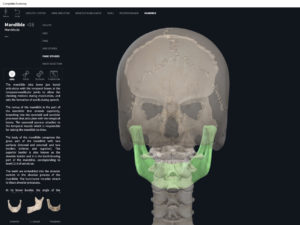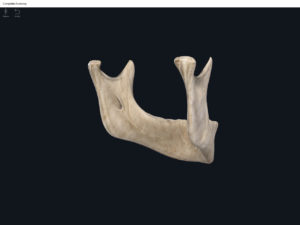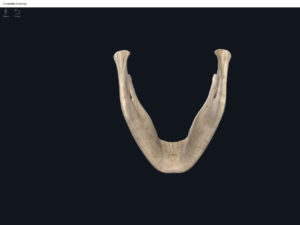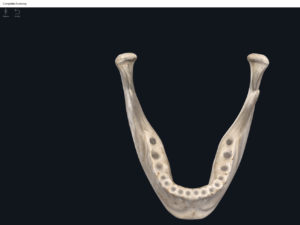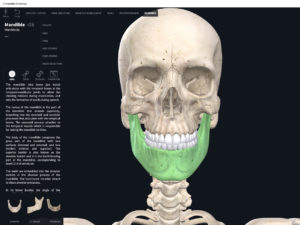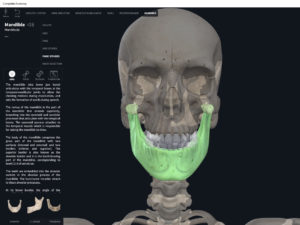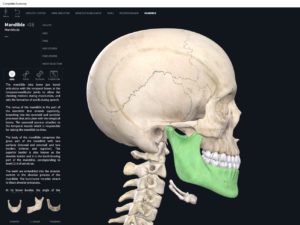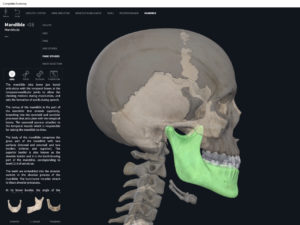Anatomy & Physiology: Bones—Skull, Mandible.
Structure.
- Lower jawbone is the largest and strongest of the facial bones.
- The only freely moving skull bone.
- Consists of: the body and rami (perpendicular portions).
- Mandibular angle: where the ramus meets the mandibular body.
- Condylar process: of each rami; articulates with mandibular fossa of temporal bone. Forms the temporomandibular joint (TMJ).
- Coronoid process: where temporalis (muscle) attaches.
- Mandibular notch: a depression between the condylar process and coronoid process.
- Alveolar process: is a slightly raised arch (more like a very small ridge) which contains the sockets (alveoli) for teeth in the lower jaw bone.
- Mental foramen: “ment” = chin. This is where dentists inject anesthesia.
- Mandibular foramen: located on the interior surface; inferior and between the condylar process and coronoid process. This is where dentists inject anesthesia. This foramen is a passageway for nerve and blood vessels supplying the teeth in the lower jaw bone.
Function.
- To break down food when eating.
Clinical Significance.
References
Biel, A. (2015). Trail guide to the body: A hands-on guide to locating muscles, bones and more.
Jenkins, G., & Tortora, G. J. (2012). Anatomy and Physiology: From Science to Life, 3rd Edition International Stu. John Wiley & Sons.
Muscolino, J. E. (2017). The muscular system manual: The skeletal muscles of the human body.
